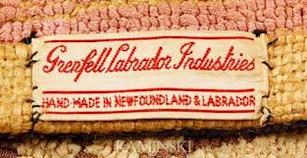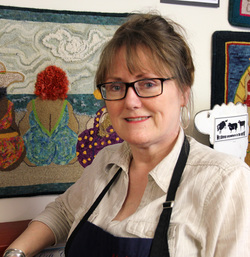Grenfell Mission is a medical and religious mission founded by Sir Wilfred Grenfell in the late 19th century in St. Anthony, Newfoundland and Labrador.
The purpose of the mission was to help the poor with food, clothing and medical care, as well as improving their global economic conditions. The mission was created by Grenfell and modeled after a Boston hospital founded and managed by Jessie Luther.
Grenfell Mission was famous for its burlap rugs, which were sold to hospitals in the United States and Britain. Encouraged and promoted by Dr.Grenfell, the rug makers of the mission used designs created by Mrs. Grenfell. Beginning in the early 20th century, the International Grenfell Association (IGA) hired Jessie Luther of Providence, Rhode Island, to set up and direct the Grenfell Industrial Department. Grenfell established retail shops in England and in several U.S. cities. These shops were staffed by volunteers and augmented by traveling salesmen. Following the death of Dr. Grenfell and the surge in machine-made rug production, the business gradually failed. Grenfell rugs remain highly prized by folk art collectors.
In 1892, when Dr. Wilfred T. Grenfell arrived from England, he met courageous, hardworking people who were fighting terrible odds against chronic disease, hunger, poverty and exploitation. From his determination to alleviate their distress, Grenfell's medical mission began. His conviction that outright gifts of money, food and clothing would offer no long term help led to the development of a cottage industry known as "the Industrial," which produced distinctive handicrafts including hooked mats. The mat industry rose to peak production in the late 1920s and early 1930s. It began to decline as the effects of the Great Depression reached the region and fell off dramatically after World War II.
In 1905, Grenfell met Jessie Luther, an American woman who had set up a sanitarium with crafts as part of the treatment. Excited by her methods Grenfell encouraged her to come north. In 1906, Luther journeyed to the tiny settlement of St. Anthony on the northeastern most tip of Newfoundland to establish a weaving project by which the local women could augment their families' meager and unreliable income from fishing.
Silk or rayon stocking material, dyed; 42" x 31 1/2";
Mat maker unknown, ca. 1938.












 RSS Feed
RSS Feed






